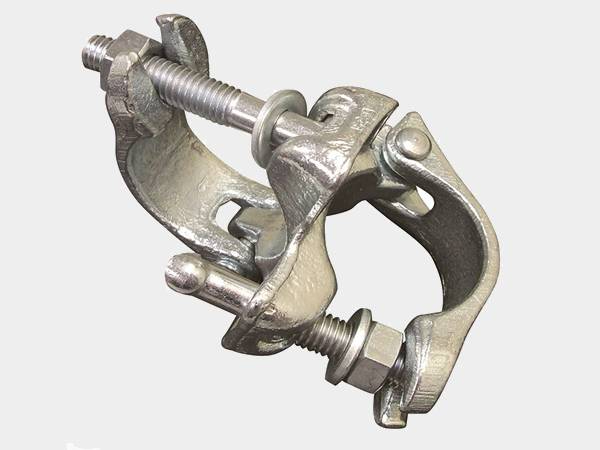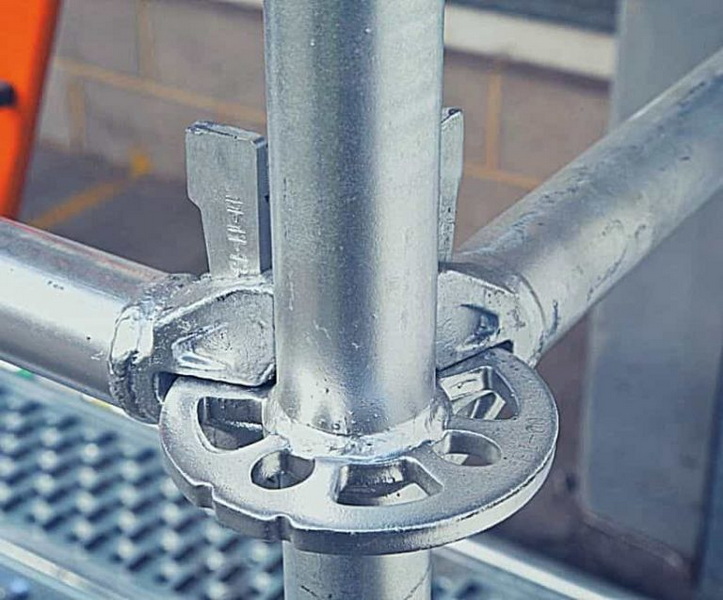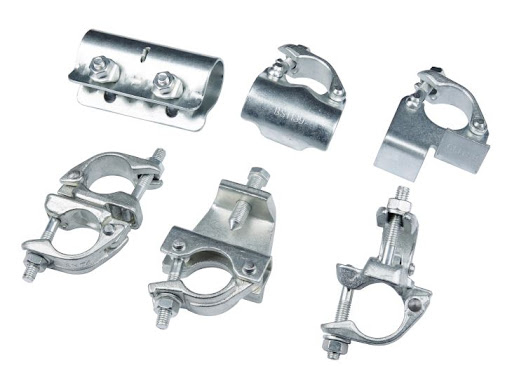Content Menu
● Understanding Coupler Scaffolding Systems
>> What is a Coupler Scaffolding System?
>> Types of Couplers
● Installation Steps for Coupler Scaffolding Systems
>> Step 1: Site Preparation
>> Step 2: Setting Up Base Plates
>> Step 3: Installing Vertical Standards
>> Step 4: Connecting Horizontal Ledgers
>> Step 5: Adding Diagonal Braces
>> Step 6: Installing Decking
>> Step 7: Final Checks
● Safety Measures When Using Coupler Scaffolding Systems
● Maintenance of Coupler Scaffolding Systems
● Common Mistakes in Scaffold Installation
● Benefits of Using Coupler Scaffolding Systems
● Advanced Techniques in Scaffold Assembly
>> Modular Scaffold Systems
>> Hybrid Scaffold Solutions
● Environmental Considerations in Scaffold Use
● Innovations in Scaffold Technology
● Conclusion
● FAQ
>> 1. What is a coupler in scaffolding?
>> 2. How do I know if my scaffold is safe to use?
>> 3. Can I use coupler scaffolding on uneven ground?
>> 4. What type of training do workers need for using scaffolds?
>> 5. How often should scaffolds be inspected?
● Citations:
The coupler scaffolding system is a vital component in modern construction, providing essential support and safety for workers at various heights. This article will guide you through the proper installation and usage of a coupler scaffolding system, ensuring that you can set up a safe and effective workspace. We will explore the components, installation steps, safety measures, and maintenance tips.

Understanding Coupler Scaffolding Systems
What is a Coupler Scaffolding System?
A coupler scaffolding system consists of various tubes and couplers that connect to form a stable structure. The primary components include:
- Scaffold Tubes: Vertical and horizontal pipes that provide the framework.
- Couplers: Clamps that connect the tubes together at various angles.
- Base Plates: Provide stability at the bottom of the scaffold.
- Braces: Diagonal supports that enhance stability.
Types of Couplers
Different types of couplers serve specific purposes in scaffolding:
| Type of Coupler | Function | Application in Scaffolding |
| Right Angle Couplers | Secure tubes at 90 degrees | Creating right angles for frames and supports |
| Swivel Couplers | Connect tubes at various angles | Supporting diagonal bracing in scaffolds |
| Sleeve Couplers | Join scaffold tubes end-to-end | Extending the length of scaffold runs |
| Board Retaining Couplers | Secure scaffolding boards in place | Preventing movement of platforms |
| Base Plate Couplers | Provide a flat bearing surface | Stabilizing scaffolds at the base |
Installation Steps for Coupler Scaffolding Systems
Step 1: Site Preparation
1. Select the Ground Area: Choose a level area free from debris.
2. Prepare Base Plates: Ensure the ground is compacted and stable to support the weight of the scaffolding.
Step 2: Setting Up Base Plates
1. Place Base Plates: Position them where the scaffold will be erected.
2. Level the Base Plates: Adjust as necessary to ensure they are even.
Step 3: Installing Vertical Standards
1. Insert Standards into Base Plates: Securely attach vertical pipes to the base plates.
2. Ensure Plumbness: Use a level to check that each standard is vertical.
Step 4: Connecting Horizontal Ledgers
1. Attach Ledgers: Use right angle couplers to connect horizontal ledgers between vertical standards.
2. Secure Connections: Tighten couplers using a spanner to ensure stability.
Step 5: Adding Diagonal Braces
1. Install Diagonal Braces: Connect braces between standards to prevent lateral movement.
2. Check for Stability: Ensure all connections are secure before proceeding.
Step 6: Installing Decking
1. Place Scaffold Boards: Lay boards across ledgers to create working platforms.
2. Secure Boards: Use board retaining couplers to prevent movement.
Step 7: Final Checks
1. Inspect All Connections: Ensure all couplers are tightened and secure.
2. Conduct a Safety Check: Verify that the entire structure is stable before use.

Safety Measures When Using Coupler Scaffolding Systems
Safety is paramount when working with scaffolding systems. Here are some critical measures to follow:
- Personal Protective Equipment (PPE): Always wear helmets, gloves, safety glasses, and harnesses when working on or around scaffolds.
- Training and Certification: Ensure that all workers involved in erecting or using scaffolds are trained and certified in scaffold safety procedures.
- Load Capacity Awareness: Be aware of the load capacity of your scaffold system. Do not exceed the recommended weight limits as specified by the manufacturer or safety regulations.
- Regular Inspections: Conduct daily inspections before use, checking for any signs of wear, damage, or instability.
- Weather Conditions: Avoid using scaffolds during high winds, storms, or other adverse weather conditions that could compromise stability.
Maintenance of Coupler Scaffolding Systems
Proper maintenance extends the life of your scaffolding systems:
1. Regular Cleaning: Remove debris and contaminants from scaffolds after use to prevent rust and deterioration.
2. Inspect Components: Regularly check for rust or damage on tubes and couplers; replace any damaged parts immediately.
3. Store Properly: When not in use, store scaffolding components in a dry place to prevent corrosion.
4. Lubrication of Moving Parts: If your system includes any moving parts, ensure they are lubricated as per manufacturer guidelines to maintain functionality.
Common Mistakes in Scaffold Installation
Understanding common mistakes can help avoid accidents:
1. Neglecting Ground Conditions: Failing to assess ground stability can lead to collapses; always ensure a solid foundation.
2. Improper Use of Couplers: Using incorrect types or failing to tighten couplers can compromise structural integrity.
3. Overloading Scaffolds: Exceeding weight limits can lead to failure; always adhere to load specifications.
4. Ignoring Manufacturer Instructions: Each coupler scaffolding system may have specific guidelines; always follow these instructions closely.
Benefits of Using Coupler Scaffolding Systems
The advantages of using a coupler scaffolding system are numerous:
- Versatility: Can be configured for various heights and shapes, accommodating different construction needs.
- Cost-Effectiveness: Durable materials reduce replacement costs over time; effective design minimizes labor costs during setup.
- Safety Features: When installed correctly, they provide excellent support and safety for workers at height.
Advanced Techniques in Scaffold Assembly
Modular Scaffold Systems
In addition to traditional coupler systems, modular scaffold systems are becoming increasingly popular due to their ease of assembly and versatility:
1. Pre-fabricated Components: Modular systems come with pre-fabricated components that fit together easily without extensive tools or skills required.
2. Quick Assembly Time: These systems can be assembled quickly on-site which reduces labor costs significantly.
Hybrid Scaffold Solutions
Combining different types of scaffold systems can enhance efficiency:
1. Using Both Frame and Coupler Systems Together: This approach allows you to leverage the strengths of each type for specific tasks—frame systems for quick setups and coupler systems for more complex structures.
2. Adaptability for Various Projects: Hybrid systems can adapt more readily to changes in project scope or site conditions.
Environmental Considerations in Scaffold Use
As construction practices evolve towards sustainability, consider these factors:
1. Material Selection:
- Opt for recyclable materials when possible; many modern scaffold systems utilize aluminum or steel which can be recycled after their lifecycle ends.
2. Energy Efficiency During Use:
- Plan scaffold setups strategically to minimize energy consumption during construction activities by optimizing access routes and workspaces.
3. Waste Management Practices:
- Implement waste reduction strategies on-site by reusing materials whenever possible during scaffold assembly and disassembly processes.
Innovations in Scaffold Technology
The future of scaffolding is bright with technological advancements:
1. Smart Scaffolding Systems:
- Integration with IoT (Internet of Things) devices allows real-time monitoring of structural integrity through sensors that detect stress levels or movement within the scaffold structure.
2. Drones for Inspection Purposes:
- Drones can be utilized for aerial inspections of high-rise scaffold setups ensuring compliance with safety standards without putting workers at risk during inspections.
3. Virtual Reality (VR) Training Programs:
- VR technology offers immersive training experiences for workers learning about scaffold assembly techniques without physical risks associated with height work during training sessions.
Conclusion
The proper installation and use of a coupler scaffolding system are crucial for ensuring safety on construction sites. By following the outlined steps and adhering to safety measures, workers can create a reliable workspace that supports their tasks efficiently. Regular maintenance also plays an essential role in prolonging the life of your scaffolding equipment.
Through understanding its components, installation processes, safety protocols, and maintenance requirements, you can effectively utilize a coupler scaffolding system while minimizing risks associated with height work.

FAQ
1. What is a coupler in scaffolding?
A coupler is a device used to connect two scaffold tubes together securely, allowing for various configurations in scaffold structures.
2. How do I know if my scaffold is safe to use?
Regular inspections should be conducted to check for any loose connections, rust, or structural damage before using the scaffold.
3. Can I use coupler scaffolding on uneven ground?
Yes, but it requires careful leveling of base plates and possibly additional supports to ensure stability.
4. What type of training do workers need for using scaffolds?
Workers should receive training on scaffold assembly, safety procedures, and proper use of personal protective equipment (PPE).
5. How often should scaffolds be inspected?
Scaffolds should be inspected daily before use and after any event that may affect their integrity, such as severe weather or heavy loads.
Citations:
[1] https://www.defenal.com/service/installation-maintenance.html
[2] https://www.youtube.com/watch?v=veF4uSUtrEY
[3] https://patents.google.com/patent/WO2003091512A1/zh
[4] https://www.metaltech.co/setup-instructions/
[5] https://www.youtube.com/watch?v=offGkz1G64s
[6] http://www.sklrd.cn/show.php?id=965
[7] https://www.acrow.com.au/wp-content/uploads/2020/11/couplers-product-guide.pdf
[8] https://www.youtube.com/watch?v=K4eABlmOKqU
[9] https://scaffoldtype.com/tube-and-coupler-scaffolding/






















